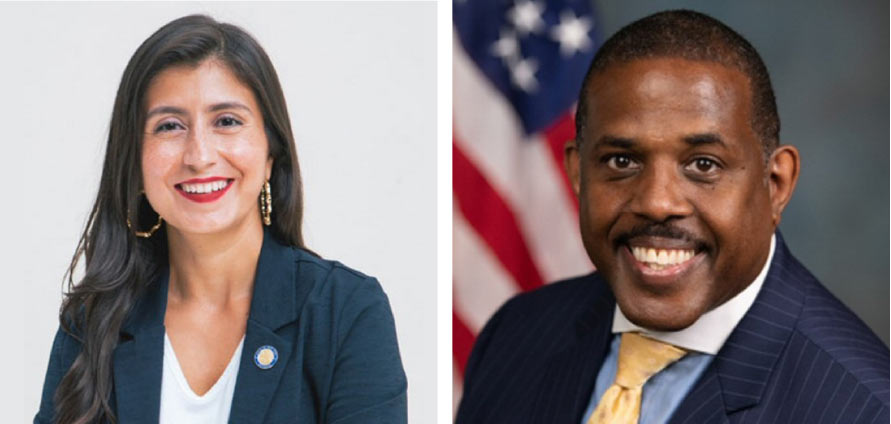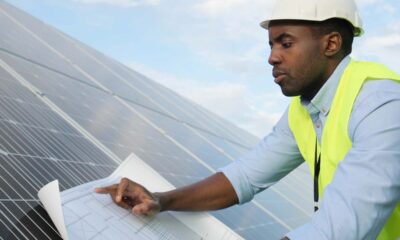Employment
Governor Announces Clean Energy Jobs At Highest Level Ever Statewide

Governor Kathy Hochul, this week, announced the number of individuals with clean energy jobs in New York State reached the highest level ever with a record 171,000 workers at the end of 2022, reflecting the quality career opportunities in clean energy sectors that continue to outpace overall job growth statewide as New York accelerates efforts to meet its climate goals.
The announcement builds on the State’s Climate Leadership and Community Protection Act commitment to ensure a just and equitable transition for all New Yorkers.
“This year’s Clean Energy Industry Report paints a promising picture of our state’s thriving green economy,” Governor Hochul said. “New York’s communities are building sustainable pathways to success through workforce development. The quality, family-sustaining jobs we are seeing in the clean energy industry provide opportunities for growth, while also offering a chance to make a meaningful, positive impact on New York’s carbon footprint.”
The 2023 New York Clean Energy Industry Report released yesterday by the New York State Energy Research and Development Authority (NYSERDA) provides data on the State’s clean energy industry through the end of 2022. The report shows New York’s clean energy economy grew 3.5 percent from 2021 to 2022, outpacing statewide economic growth at 3 percent and adding nearly 30,000 jobs since 2015, when NYSERDA first began tracking clean energy jobs.
Additional key findings from this year’s report include:
New York had nearly 171,000 clean energy workers at the end of 2022, an increase of 5,800 jobs since 2021.
Clean energy job growth took place across all technology sectors:
Building decarbonization and energy efficiency added over 2,000 jobs and accounted for 75 percent of all clean energy employment in 2022.
Clean and alternative transportation continued to experience exceptional growth, expanding by almost 20 percent, or 2,223 jobs in just twelve months.
Grid modernization and energy storage grew by 10 percent, or 241 jobs.
To bolster New York’s pipeline for skilled workers and ensure a just and equitable transition to a zero-emissions grid, NYSERDA has committed more than $170 million toward workforce development and training initiatives. Importantly, NYSERDA prioritizes training programs for the state’s most underserved populations with approximately 40 percent of funding going towards initiatives that serve low-income individuals, veterans, disabled workers, single parents, the formerly incarcerated, and individuals from disadvantaged communities. These programs also help integrate fossil fuel workers into the clean energy industry.
NYSERDA is also funding several efforts to build career awareness in K-12 schools and training teachers on clean energy career opportunities.
As part of its commitments, NYSERDA’s workforce development efforts support career pathway programs providing education, training, and services to help place new workers into clean energy occupations like high-efficiency heating, ventilation, and air conditioning (HVAC), building electrification, energy efficiency and offshore wind as well as upskilling and reskilling existing workers for clean energy jobs. NYSERDA has already awarded approximately $80 million to support important partnerships with labor, colleges and universities, non-for-profits, manufacturers, and more. These efforts will help train and prepare more than 40,000 New Yorkers for growing clean energy job opportunities and assist clean energy businesses in recruiting, hiring, and training workers.
To date, over 32,000 new and existing workers have been trained or are being trained. For more information on how NYSERDA is advancing a robust clean energy workforce, please see NYSERDA’s website.
State Senator Kevin Parker said, “A key to building the clean energy economy and addressing climate change impacts is developing the skilled workforce to construct, operate and maintain the infrastructure needed to meet our goals. This report shows that our work is helping create new job opportunities in the clean energy sector, and delivering on the CLCPA commitment to train New Yorkers in underserved communities and provide new career pathways.”
State Senator Jessica Ramos said, “These job numbers demonstrate that climate jobs are our economy’s future. I’m proud of the labor committee’s work to secure pre-apprenticeship and apprenticeship funding so we can continue preparing young people for a 21st-century climate economy. These numbers only confirm my resolve to keep that momentum going in the upcoming budget cycle,” said Senator Jessica Ramos, chair of the Senate Labor Committee.”
New York State’s Nation-Leading Climate Plan
New York State’s nation-leading climate agenda calls for an orderly and just transition that creates family-sustaining jobs, continues to foster a green economy across all sectors and ensures that at least 35 percent, with a goal of 40 percent, of the benefits of clean energy investments are directed to disadvantaged communities. Guided by some of the nation’s most aggressive climate and clean energy initiatives, New York is on a path to achieving a zero-emission electricity sector by 2040, including 70 percent renewable energy generation by 2030, and economywide carbon neutrality by mid-century. A cornerstone of this transition is New York’s unprecedented clean energy investments, including more than $55 billion in 145 large-scale renewable and transmission projects across the state, $6.8 billion to reduce building emissions, $3.3 billion to scale up solar, more than $1 billion for clean transportation initiatives, and over $2 billion in NY Green Bank commitments. These and other investments are supporting more than 165,000 jobs in New York’s clean energy sector in 2021 and over 3,000 percent growth in the distributed solar sector since 2011. To reduce greenhouse gas emissions and improve air quality, New York also adopted zero-emission vehicle regulations, including requiring all new passenger cars and light-duty trucks sold in the State be zero emission by 2035. Partnerships are continuing to advance New York’s climate action with nearly 400 registered and more than 100 certified Climate Smart Communities, nearly 500 Clean Energy Communities, and the State’s largest community air monitoring initiative.













